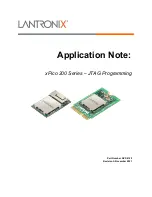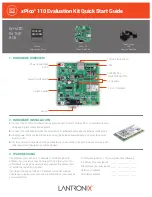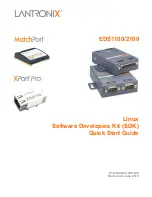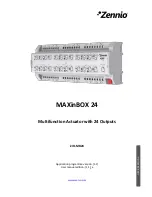Chapter 12 Serial Peripheral Interface (S08SPIV4)
MC9S08LG32 MCU Series, Rev. 5
290
Freescale Semiconductor
are disabled and SPSCK, MOSI and MISO are inputs. If a transmission is in progress when the mode fault
occurs, the transmission is aborted and the SPI is forced into idle state.
This mode fault error also sets the mode fault (MODF) flag in the SPI Status Register (SPIxS). If the SPI
interrupt enable bit (SPIE) is set when the MODF flag gets set, then an SPI interrupt sequence is also
requested.
When a write to the SPI Data Register in the master occurs, there is a half SPSCK-cycle delay. After the
delay, SPSCK is started within the master. The rest of the transfer operation differs slightly, depending on
the clock format specified by the SPI clock phase bit, CPHA, in SPI Control Register 1 (see
NOTE
A change of the bits CPOL, CPHA, SSOE, LSBFE, MODFEN, SPC0,
BIDIROE with SPC0 set, SPPR2-SPPR0 and SPR3-SPR0 in master mode
will abort a transmission in progress and force the SPI into idle state. The
remote slave cannot detect this, therefore the master has to ensure that the
remote slave is set back to idle state.
14.5.2
Slave Mode
The SPI operates in slave mode when the MSTR bit in SPI Control Register1 is clear.
•
SPSCK
In slave mode, SPSCK is the SPI clock input from the master.
•
MISO, MOSI pin
In slave mode, the function of the serial data output pin (MISO) and serial data input pin (MOSI) is
determined by the SPC0 bit and BIDIROE bit in SPI Control Register 2.
•
SS pin
The SS pin is the slave select input. Before a data transmission occurs, the SS pin of the slave SPI must be
low. SS must remain low until the transmission is complete. If SS goes high, the SPI is forced into idle
state.
The SS input also controls the serial data output pin, if SS is high (not selected), the serial data output pin
is high impedance, and, if SS is low the first bit in the SPI Data Register is driven out of the serial data
output pin. Also, if the slave is not selected (SS is high), then the SPSCK input is ignored and no internal
shifting of the SPI shift register takes place.
Although the SPI is capable of duplex operation, some SPI peripherals are capable of only receiving SPI
data in a slave mode. For these simpler devices, there is no serial data out pin.
NOTE
When peripherals with duplex capability are used, take care not to
simultaneously enable two receivers whose serial outputs drive the same
system slave’s serial data output line.
Содержание MC9S08LG16
Страница 2: ......
Страница 4: ......
Страница 8: ......
Страница 20: ......
Страница 26: ...Chapter 1 Device Overview MC9S08LG32 MCU Series Rev 5 26 Freescale Semiconductor...
Страница 40: ...Chapter 2 Pins and Connections MC9S08LG32 MCU Series Rev 5 40 Freescale Semiconductor...
Страница 96: ...Chapter 5 Resets Interrupts and General System Control MC9S08LG32 MCU Series Rev 5 96 Freescale Semiconductor...
Страница 296: ...Chapter 12 Serial Peripheral Interface S08SPIV4 MC9S08LG32 MCU Series Rev 5 296 Freescale Semiconductor...
Страница 372: ......


















